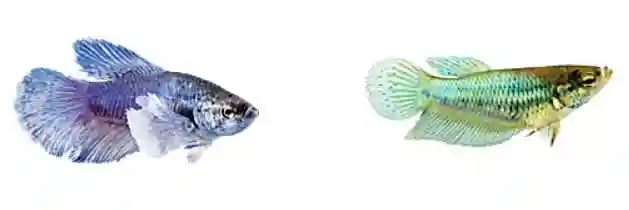Betta fish, also known as Siamese fighting fish. It is a beautiful aquatic creature. Their vibrant colors and unique personalities make them popular pets for fish keepers. It doesn’t matter if you are a beginner or experienced; betta fish are an excellent addition to your aquarium. But, proper betta fish care is essential to ensure these stunning fish thrive in their environment. In this comprehensive guide, we’ll cover everything you need to know about betta fish care. We will look into setting up their habitat to address common health issues.

Betta Fish (Siamese Fighting Fish) – Species Overview & Characteristics
| Aspect | Information |
|---|---|
| Scientific Name | Betta splendens |
| Common Name | Betta, Siamese Fighting Fish |
| Origin | Southeast Asia, including Thailand |
| Average Lifespan | 2-3 years, but can live longer with proper care |
| Size | Typically 2.25 to 3 inches (5.7 to 7.6 cm) |
| Color Varieties | Wide range of colors and tail shapes |
| Temperament | Aggressive, especially towards other males |
| Habitat | Slow-moving, stagnant waters like rice paddies |
| Tank Size | At least 2.5 gallons, larger preferred for comfort |
| Water Temperature | 78-80°F (25-27°C) |
| Water pH Level | Slightly acidic to neutral (6.5-7.5) |
| Diet | Betta pellets or flakes, occasional live/frozen foods |
| Breeding Style | Bubble nest builders, males protect eggs/fry |
| Care Level | Moderately easy with proper tank maintenance |
| Tank Decorations | Prefer hiding spots, live or silk plants |
| Tank Mates | Prefer solitary or with non-aggressive species |
| Common Health Issues | Fin rot, ich, constipation, swim bladder issues |
| Notable Characteristics | Beautiful, long fins, colorful, known for occasional fights between males |
Origin and Distribution of Betta Fish
Siamese fighting fish come from the shallow waters of places like Thailand, Indonesia, Malaysia, Vietnam, and some parts of China. These areas are home to rice paddies, slow-moving streams, swamps, and ponds where you can find bettas. People have also introduced bettas to many other places, so now you can find them in various countries, even where they didn’t originally belong.
The nickname “Siamese fighting fish” comes from the fact that people used to organize fights between male bettas, kind of like how they have cockfights. In some places, these fights still happen, and people even bet money on them. Sometimes, bettas are bred specifically to be more aggressive so they can have better fights.
Betta Fish Colors and Markings

Male bettas are known for their stunning colors and long, flowing fins, making them very popular in the aquarium world. Female bettas, on the other hand, aren’t as brightly colored, and their fins are much shorter. In their natural habitat, bettas are not usually super colorful.
But because of breeding in captivity, we now have bettas in all sorts of colors, like white, yellow, orange, red, pink, blue, green, turquoise, brown, and black. They even have different patterns, from solid colors to ones with various colors on their fins and bodies. Breeders have also developed different types of fins through selective breeding, like veil tails, crown tails, deltas, and more.
Physical Characteristics: Both male and female bettas have a sleek, torpedo-shaped body and a mouth that points upward, which helps them eat from the water’s surface. When they’re all grown up, they reach a size of about two to three inches. Males are a bit larger and more colorful than females. One unique thing about bettas is their special “labyrinth organ” that lets them take in oxygen from the air, not just from the water. This ability helps them survive in areas with little oxygen.
Tankmates: Male bettas can’t live together unless there are dividers in the tank to keep them apart. Multiple female bettas usually get along, and you can even add one male to the group. They can also share their tank with other peaceful fish, as long as these tankmates are small and don’t nip at their fins, like tiger barbs.
Gender Differences of Betta Fish

To tell males and females apart, look for the more vibrant colors and longer, flowing fins on the males. Males also have a distinct “beard” under their gill covers and are larger overall. Females, on the other hand, have shorter fins and will show vertical stripes and an egg spot when they’re ready to mate.

Creating the Ideal Betta Fish Home
Betta fish are beautiful and interesting pets, and they need a comfortable home to live in. Let’s talk about how to set up the perfect habitat for your Bettas.
1. Get the Right Tank: Start by choosing the right tank. For one Betta fish, a tank that can hold at least 2.5 gallons of water is a good choice. It’s like giving your fish a spacious room to swim in.
2. Add Gravel or Substrate: The bottom of the tank should have gravel or substrate. These are like the floor of your fish’s home. Gravel or small pebbles can be a good choice, and they come in various colors to make the tank look pretty.
3. Water Conditions: Water is essential for your Betta’s life, so it’s important to keep it clean. You need a water conditioner to remove any harmful chemicals from tap water. The ideal water temperature is around 78-80°F (25-27°C).
4. Use a Filter: A filter is like a cleaning machine for the water. It helps remove waste and keeps the water clean for your Betta. Make sure to pick a filter suitable for the size of your tank.
5. Decorations and Hiding Spots: Betta fish like to hide and explore, so you can add decorations like plants and caves. These give your Betta places to hide and make the tank look more interesting.
6. Lighting: Betta fish don’t need very bright lights. A gentle LED light can make the tank look lovely without stressing your fish.
7. Feeding: Feed your Betta fish high-quality Betta pellets or flakes. You can also give them occasional treats like bloodworms or brine shrimp. Don’t overfeed them; it’s better to feed them small amounts a couple of times a day.
8. Water Changes: Every week, change about 20-25% of the water in the tank. This helps keep the water clean and healthy for your Betta. Be sure to add water conditioner to the new water.
9. Avoid Overcrowding: Bettas don’t like sharing their space with other Betta fish or other aggressive fish. Keep them alone in their tank.
10. Regular Observation: Spend time watching and observing your Betta fish. It’s a great way to see how they are doing. If you notice any unusual behavior or signs of illness, take action quickly.
Maintaining Betta Fish (Siamese fighting fish) Healthy
Betta fish are beautiful and fascinating pets, but just like any other pet, they need care to stay healthy and happy. Here’s how to maintain the health of your Bettas.
1. Quality Food: Feed your Betta fish high-quality Betta pellets or flakes. These foods are specifically made to provide the nutrients they need. Overfeeding can make them sick, so stick to the recommended amount on the packaging.
2. Clean Water: Clean water is crucial for your Betta’s well-being. Regularly change about 20-25% of the water in the tank every week. This helps remove waste and keep the water safe. Always use a water conditioner to treat tap water before adding it to the tank.
3. Suitable Tank Size: Make sure your Betta has enough space to swim comfortably. A tank of at least 2.5 gallons is a good start, but bigger is often better. Crowded tanks can stress Betta fish.
4. Proper Water Temperature: Betta fish thrive in water that’s around 78-80°F (25-27°C). Use a heater if needed to maintain a consistent temperature. Extreme cold or heat can harm your Betta.
5. Filtration: A filter keeps the water clean by removing waste and harmful substances. Choose a filter that matches the size of your tank. A clean environment means a healthier fish.
6. Monitoring Behavior: Pay attention to your Betta’s behavior. If you notice your fish is suddenly less active, not eating, or staying at the surface of the water gasping for air, it may be a sign of a problem. Act quickly and consult an expert if needed.
7. Quarantine New Fish: If you’re introducing a new Betta or any other fish to the tank, it’s a good idea to keep them in a separate tank for a few weeks. This helps prevent the spread of diseases.
8. Tank Decorations: Provide hiding spots and decorations for your Betta to explore. Plants, caves, and ornaments not only make the tank look nice but also keep your Betta entertained.
9. Avoid Overcrowding: Betta fish are often happier when they’re kept alone in their tank. They can become aggressive if housed with other Betta fish or certain other species. Keep an eye on their behavior.
10. Regular Health Checks: Inspect your Betta fish regularly for any signs of illness. Look for changes in color, odd spots, torn fins, or strange growths. If you notice anything unusual, seek advice from a knowledgeable pet store or a vet who specializes in fish.
Frequently Asked Questions (FAQs)
Can bettas live with other fish?
While bettas are known for their aggression, it’s possible to have a community tank with compatible tankmates like small, peaceful fish or snails. However, always monitor their behavior and be prepared to separate if conflicts arise.
How often should I change the water in the tank?
Aim for a weekly water change of about 25-30%. This helps maintain water quality and prevents the buildup of harmful substances.
Do bettas need a filter?
Yes, a filter is beneficial for keeping the water clean and providing oxygen. Choose a filter with adjustable flow to prevent strong currents that can stress bettas.
Can bettas jump out of the tank?
Yes, bettas are skilled jumpers. Ensure your tank has a secure lid to prevent your betta from jumping out.
How can I tell if my betta is stressed?
A stressed betta may show signs of dull color, clamped fins, or may be hiding. Providing a comfortable and stimulating environment can help alleviate stress.
Can I use tap water for my betta?
Tap water can be used, but it needs to be treated with a water conditioner to remove chlorine and chloramines, which are harmful to bettas.
Conclusion
Proper betta fish care is essential to ensure the health and happiness of these captivating aquatic pets. Keep an eye on their health, know how to handle common problems, and always look out for their happiness. With good care, your Betta fish will be your joyful companions for years. With the right care, your betta fish will bring joy and beauty to your life for years to come.







Leave a Comment
You must be logged in to post a comment.